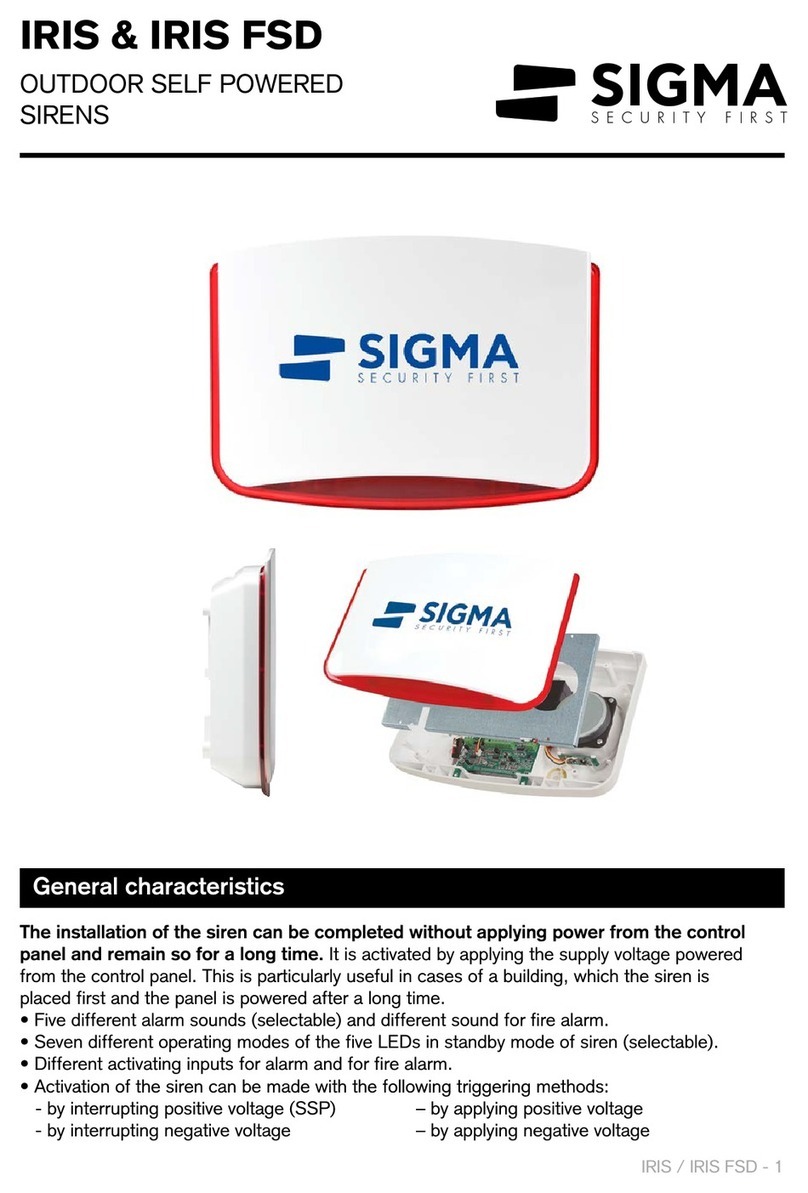
7
Programming the Siren
Battery Fault output
The siren functions are programmed using the “MENU” and “SELECT” buttons, which are placed
on the siren board.
Entering the programming process
To enter the siren programming process, turn on the siren by connecting the battery to the cor-
responding terminals, making sure to use the correct polarity.
Then press and hold the “MENU” button until the confirmation signal (five beeps) is heard and the
“SOUND” LED lights up.
Siren Sound Selection
When the “SOUND” LED lights up, use the “SELECT” button to select the sound you want the
siren to hear. Every time you press the “SELECT” button, the sound of the siren will be changed,
which you will hear at low volume from the speaker. The last sound you hear will be the new
sound of the siren.
Press “MENU” button to save settings and go to next menu. The LED with “FLASH”
indication will turn on.
Select the siren’s lighting at standby mode
When the “FLASH” LED lights, use the “SELECT” button, to select the lighting mode of the siren
at standby mode or even disable it. Each time you press “SELECT” button, will change the for-
mat of movement LEDs of the siren. The form of movement that, you will see at the LEDs, is the
one, the siren will follow. When all the LEDs are off, the siren will have no lighting at standby
mode.
Press “MENU” button to save settings.
Exit Setup
To exit the programming procedure, press continuously “MENU” button until the confirmation
signal (five BEEP) is heard. Immediately, the siren will enter the standby mode.
The siren will also automatically exit programming and will return to standby mode after three
minutes without pressing either button.
Factory Programming
To restore the factory settings of the siren, press simultaneously “MENU” and “SELECT” buttons
for 2 seconds until you hear the confirmation sound – ( 5 BEEP).
The siren automatically monitors the battery status (Battery Self-Test) by dynamically checking
the battery every hour when there is a voltage at the siren power input (+ 12V-) or every five min-
utes when there is no voltage. If, during the test, the battery voltage is lower than 11.5V, we have
a low battery voltage while, if the battery voltage is below 10.0V, we have a battery failure.
In both cases, the siren flash is activated as follows: initially, the middle LED of the flash turns on,
then it turns off and the next two turn on and finally, they turn off and the two external LEDs turn
on. This process is repeated until the battery voltage rises above 11.5V or the battery is replaced
with a new one and returns to standby mode again for the next test.
1.
2.
3.
4.



























